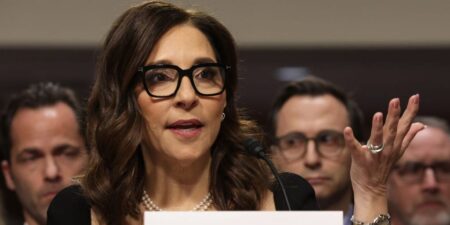The policy gears of the nation’s capital are about to shift into overdrive to move legislation intended to lower taxes, increase spending for Trump administration priorities like border security, reduce entitlement spending, and extending the U.S. debt limit. But other budgetary developments—so far occurring outside of the legislative process—could prove to be highly consequential.
Actions spearheaded by the White House DOGE Service—including federal agency staffing reductions, contract terminations, and other administrative actions—are not only disrupting government operations but impacting budgeting in ways that raise significant legal and Constitutional concerns.
The Mess Of Budgeting In FY 2025
Although obstacles to keeping the government open were removed in March, important budgetary challenges remain. DOGE-driven spending cuts mean agencies will likely approach the end of the fiscal year (September 30) with large balances of unspent appropriations. While that may sound like good news—and saving taxpayer dollars is a laudable goal—the budget execution approach being used by the Trump administration appears at odds with congressional power of the purse laws and principles.
One of those laws, the Impoundment Control Act of 1974, lays out a legal path for the president to impound (or not spend) funds provided through the legislative process. The law specifies that whenever the president has identified funds he believes should not be spent, a special message must be sent to Congress to explain the rationale. Congress then has 45 days to consider using expedited procedures (no filibuster, only simple majority needed for passage). If Congress does not pass such legislation, the funds must be made available for obligation.
President Donald Trump contends the ICA is an unconstitutional encroachment on his power to execute laws effectively and should be repealed. Funding cuts are being pursued that could fail to comply not only with the ICA but with mandated spending levels. Keep in mind, the president is a legislative partner with Congress and he signed the bill funding some of the activities he now seeks to cut.
Impoundment Resurrection
Impoundment concerns have largely been dormant since the Nixon administration. But now, budget execution is being done in ways that shift the balance of budgetary power to the president, as explored recently by Charles Kieffer.
At a recent Senate Appropriations subcommittee hearing, Comptroller General Gene Dodaro indicated the Government Accountability Office has 39 impoundment investigations underway. In addition, Democratic members of the appropriations committees in both the House and Senate have published an extensive list of funding they contend is not being spent as required by law.
Some of those potential impoundments have occurred more transparently than others. For instance, an executive order signed by President Trump on March 14, directed seven agencies to stop “non-statutory components and functions to the maximum extent consistent with applicable law.” While each of the affected agencies was included in the funding bill signed the next day, the executive order remains in place with some operations halting and staff being laid off.
For activities not subject to an executive order, it has been difficult to get information about how and whether funds are being spent. The statutorily required public database maintained by Office of Management and Budget showing how funds have been apportioned to agencies for expenditure had been a valuable source of information. (Apportionment is the process by which funds are portioned out to agencies by OMB over a period of availability.) But that website has been deactivated.
Withholding funds for policy reasons, in the absence of a formal rescission request, may violate the ICA and infringe on congressional power of the purse responsibilities. Executive orders to freeze funding, such as this one to stop funding certain activities of the Corporation for Public Broadcasting, have included a clause directing funding to be canceled “to the maximum extent allowed by law.” If funding for activities targeted by such orders is provided in current-year appropriations (a law), then subsequent legislation is required to terminate.
A murkier form of impoundment may be occurring as part of the DOGE-led campaign to downsize the federal workforce. The president enjoys broad powers to administer executive branch operations. However, GAO has asserted that workforce reductions can, at times, effectively constitute impoundment.
Complicating matters further is the fact that the fiscal year will soon be over, and it is unclear what happens if funds have not been made available before they expire at the end of September. GAO has ruled that sending a rescission package late in the fiscal year—and refusing to release the funds in a manner to allow for their prudent obligation before expiration—would constitute an ICA violation.
While the ICA empowers GAO to investigate potential impoundments, and to bring suit to compel spending, the statute does not articulate a specific authority for GAO to obtain data and access systems to ascertain whether such infractions are occurring. GAO has informed OMB that many of its ongoing ICA inquiries are impeded because the apportionments website is no longer available.
Complications Getting to FY 2026
With less than five months remaining in FY 2025, substantial legislative action on FY 2026 funding is needed to keep the government open. If the president and Congress cannot reach agreement on appropriations or stopgap measures to keep the government running into the new year, a shutdown would result.
Congressional appropriators will be challenged to determine whether and how agencies have spent current-year funds to inform next-year decisions. President Trump submitted a high-level 2026 budget request to Congress on May 2: A subsequent submission containing operating details is expected but, given ongoing FY 2025 disruptions, only rough order of magnitude spending estimates are likely to be included.
With other budgetary matters filling the legislative docket this summer, a lack of progress on appropriations could force congressional Democrats to face once again the dilemma of whether to negotiate or block funding for the new year. A decision to support the FY 2025 funding measure angered some in the party, but the alternative of experiencing a shutdown with a president comfortable testing the limits of emergency powers carries risks.
The Other Power Of The Purse Statute – The Antideficiency Act
Besides the ICA, Congress exerts budgetary power through the Antideficiency Act—a statute in force for more than 150 years. Its primary purpose is to ensure the executive branch does not commit to spending money unless funding has been formally provided. Importantly, and unlike the ICA, willful violations of the ADA can incur criminal penalties.
As explored by Eloise Pasachoff in Modernizing the Power of the Purse Statutes (2024), the president holds significant power to determine which activities can continue in the absence of appropriations. These include initiatives authorized by law, such as advance appropriations and activities undertaken pursuant to the President’s constitutional powers.
During shutdowns, OMB approves agency shutdown plans and determines which employees and activities are exempt from the ADA (the term “essential” is often incorrectly used). But transparency is lacking. Shutdown plans often omit the necessary granularity for meaningful congressional scrutiny. Further, legal interpretations regarding permissible agency actions during shutdowns are not consistently made public.
As a result, a shutdown carries with it a unique set of circumstances under which a president can exercise substantial discretion in determining which portions of the government to keep open.
The Road Ahead
The Trump administration’s aggressive approach to budget execution has raised serious legal and constitutional questions about the balance of power between branches. As the fiscal year ticks toward a close, many unspent appropriations may lapse. Ultimately, this matter highlights the need for Congress and the president to work together to follow constitutional and statutory budgeting procedures, comply with appropriations law, and ensure greater accountability and transparency for American taxpayers.
Read the full article here
















